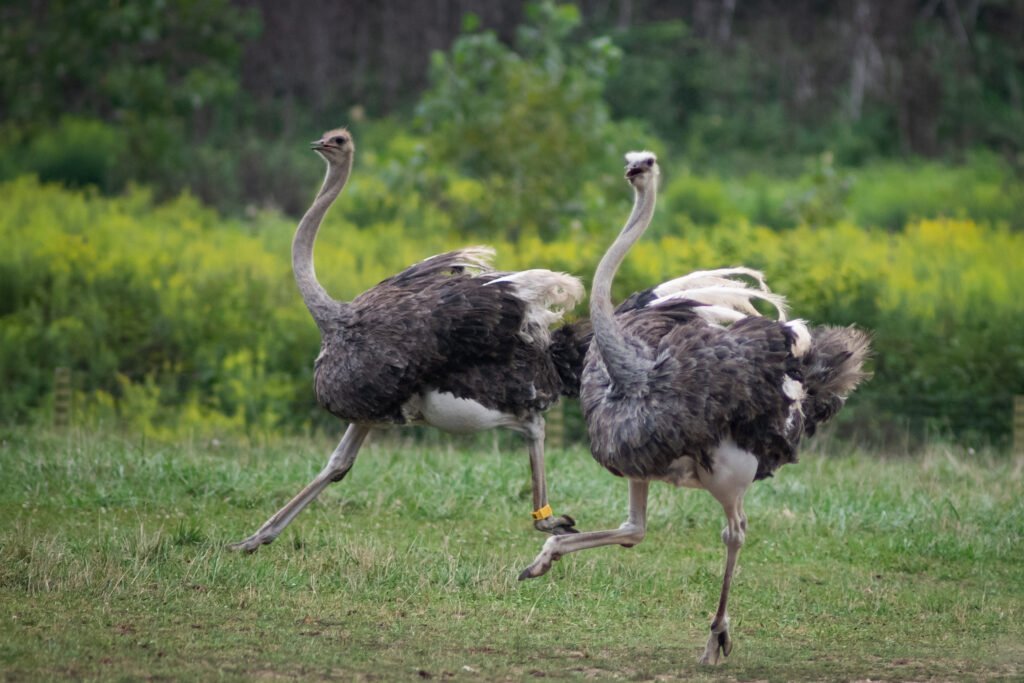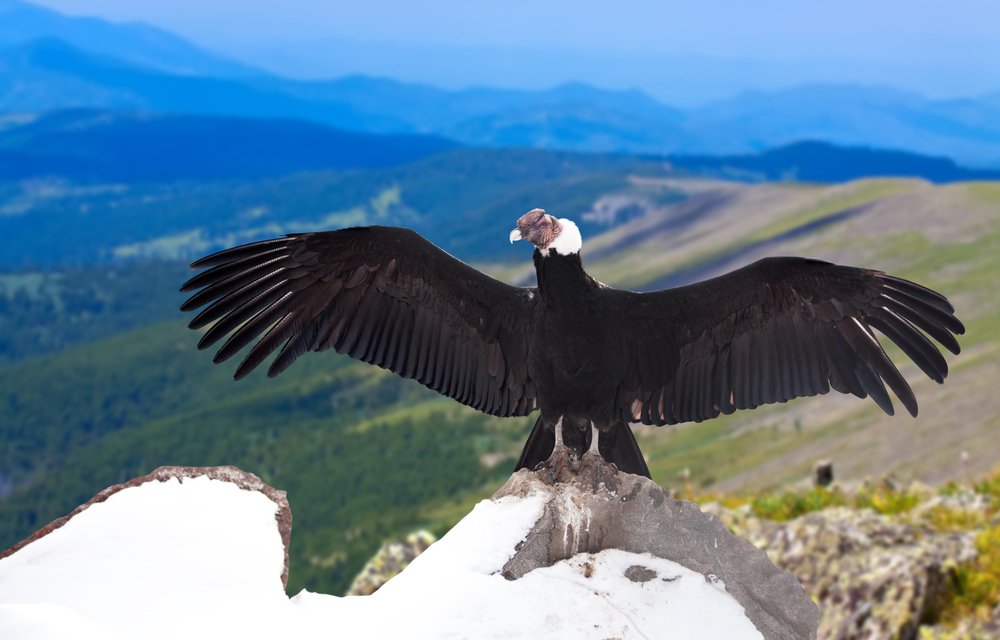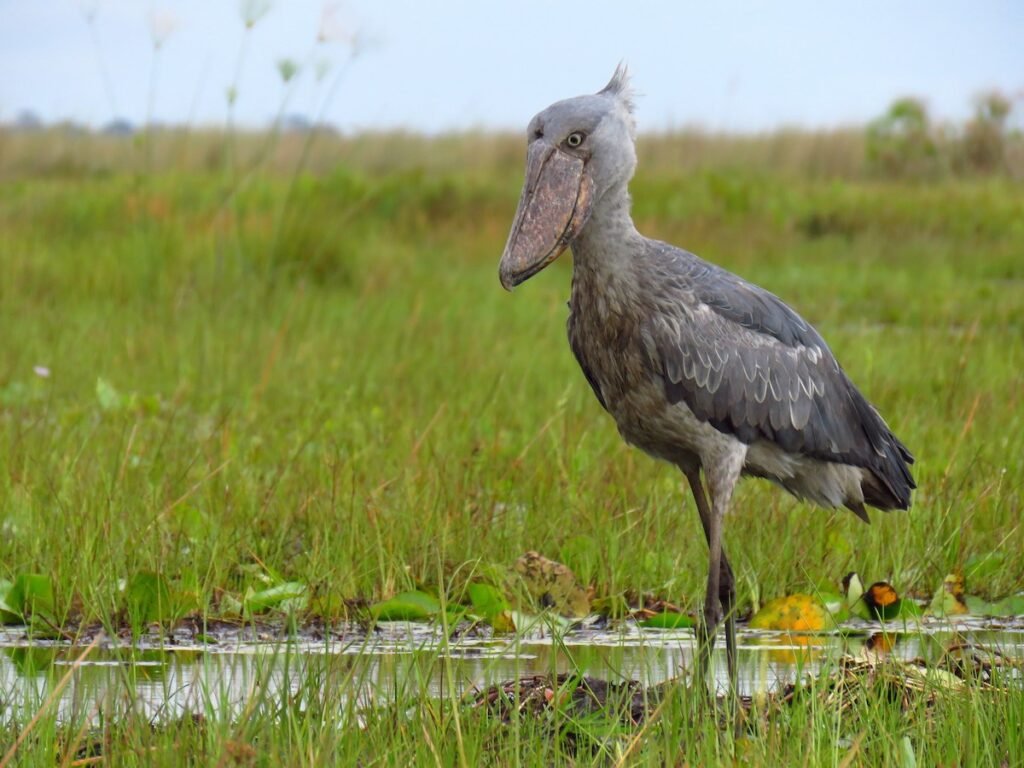Birds come in all shapes and sizes, from tiny sparrows to massive, towering creatures.
While many of us are familiar with the common smaller birds, there are some truly enormous birds found around the globe. These birds are not only impressive because of their size but also because of their unique characteristics and the roles they play in their ecosystems. In this article, we’ll explore ten of the largest bird species worldwide.
1. Ostrich (Struthio camelus)

The ostrich is by far the largest and heaviest bird on the planet. Native to Africa, ostriches can reach a height of 9 feet (2.7 meters) and weigh up to 350 pounds (160 kilograms). They have long, powerful legs designed for running at speeds up to 45 miles per hour (72 kilometers per hour), making them the fastest-running bird. Despite their size, ostriches are flightless, but they can cover large distances in search of food and water in the African savannas. Their eggs are the largest of any living land animal, with each egg weighing as much as 3 pounds (1.4 kilograms).
2. Emu (Dromaius novaehollandiae)
The emu, a native bird of Australia, is the second-largest living bird after the ostrich. Emus can grow up to 6.6 feet (2 meters) tall and weigh about 120 pounds (55 kilograms). Like the ostrich, emus are flightless and are known for their speed. They can run at speeds of up to 30 miles per hour (48 kilometers per hour) when necessary. Emus have soft, shaggy feathers and are omnivores, eating a variety of plants, insects, and fruits. They play a vital role in dispersing seeds across the Australian landscape.
3. Cassowary (Casuarius)
Found in the tropical forests of northern Australia, New Guinea, and nearby islands, cassowaries are large, flightless birds with strikingly colorful features. These birds can grow as tall as 6 feet (1.8 meters) and weigh up to 130 pounds (59 kilograms). Cassowaries are known for their helmet-like casques on their heads and their vibrant blue and black plumage. While they are mostly herbivorous, feeding on fruits, they can be dangerous due to their powerful legs and sharp claws, capable of delivering deadly kicks if threatened.
4. Greater Rhea (Rhea americana)
Native to South America, the greater rhea is the largest bird in the Americas. These birds can stand up to 5 feet (1.5 meters) tall and weigh up to 90 pounds (40 kilograms). Like the emu, the greater rhea is flightless, but it is an excellent runner and can reach speeds of up to 35 miles per hour (56 kilometers per hour). Greater rheas live in grasslands and scrubby areas of South America, where they feed on a mix of plants and insects. They are often found in flocks, especially when migrating or during the breeding season.
5. Andean Condor (Vultur gryphus)

The Andean condor is one of the largest flying birds, with a wingspan reaching up to 10.5 feet (3.2 meters). Native to South America, this massive bird of prey is mostly found in the Andes mountains. Andean condors are known for their soaring abilities and can glide for hours without flapping their wings. They feed primarily on carrion, using their keen eyesight to spot potential food from high above. Despite their size, condors can fly for miles at a time, using thermal updrafts to stay aloft.
6. California Condor (Gymnogyps californianus)
Another large bird of prey, the California condor is a close relative to the Andean condor. With a wingspan of about 9.5 feet (2.9 meters), this critically endangered bird is one of the rarest birds in the world. Native to the western United States, the California condor was once nearly extinct but has made a significant recovery due to conservation efforts. Like its Andean cousin, the California condor feeds primarily on carrion and plays an essential role in its ecosystem by helping to clean up animal carcasses.
7. Albatross (Diomedea)
The albatross is a remarkable bird known for having the longest wingspan of any living bird. With wingspans that can exceed 11 feet (3.4 meters), albatrosses are expert fliers, capable of gliding for hours or even days without flapping their wings. These seabirds are found in oceans around the world, especially in the Southern Ocean. Albatrosses feed on fish, squid, and other marine life, often traveling thousands of miles between breeding sites. Their ability to travel such long distances makes them one of the most fascinating birds.
8. Southern Cassowary (Casuarius casuarius)
Similar to its relative, the cassowary, the southern cassowary is a striking, large bird found in the rainforests of New Guinea and northern Australia. Standing up to 6 feet (1.8 meters) tall and weighing up to 130 pounds (59 kilograms), it is one of the heaviest birds in the world. With its brilliant blue skin, black feathers, and a helmet-like casque, the southern cassowary is an impressive sight. Although they are typically shy, cassowaries can be very dangerous if they feel threatened, using their powerful legs to kick predators.
9. Kori Bustard (Ardeotis kori)
The kori bustard, native to Africa, is one of the heaviest flying birds. Males can weigh up to 40 pounds (18 kilograms) and measure about 4 feet (1.2 meters) in length. These birds are found in open grasslands and savannas, where they feed on a variety of insects, small reptiles, and plants. Kori bustards are known for their impressive flying ability, despite their large size, and can take to the air when necessary to escape danger.
10. Shoebill (Balaeniceps rex)

The shoebill, a large wading bird found in tropical swamps and marshes of central tropical Africa, has an unmistakable appearance with its enormous, shoe-shaped bill. Standing at about 4.5 feet (1.4 meters) tall, the shoebill weighs between 10 to 15 pounds (4.5 to 6.8 kilograms). These birds are solitary hunters, preying on fish, frogs, and even small reptiles. Known for their calm, almost statuesque demeanor, shoebills wait for hours in a single spot for prey to come within striking distance.
Conclusion
These ten birds represent some of the largest species on the planet, each with their own unique qualities and importance in their ecosystems. Whether they are flightless giants like the ostrich or powerful flyers like the albatross, these birds continue to awe and inspire those who encounter them. Their size, beauty, and diverse behaviors make them unforgettable examples of nature’s grandeur. From the savannas of Africa to the rainforests of New Guinea, these birds remind us of the amazing variety of life that exists on Earth.

